According to workplace statistics from Zippia, American workplaces with racially and ethnically diverse leaders are 36% more likely to have better financial performance than companies without solid diversity. In addition, 67% of job seekers see diversity as a deciding factor when taking a new job.
Diversity is a higher priority at work than ever before, and it should be first in recruiters’ and managers’ minds. Companies that know how to manage diversity in the workplace are more successful and provide healthier environments.
With the above in mind, let’s go over what diversity means and how you can improve it within your own workplace.
What Is the Meaning of Diversity in the Workplace?
Workplace diversity is when employees of a company have a variety of different characteristics. Those differences can include race, sex, gender, sexual orientation, age, religion, ethnicity, and mental and physical conditions, and more.
Benefits of diversity in the workplace include:
- Better understanding between leadership and employees
- More excellent representation of the U.S. demographics outside of the workplace
- Larger applicants pools that allow you to find the most qualified candidates
- Increased customer and employee retention
- Aligning your branding with what’s most important to applicants
A more diverse workforce can also help employees connect with customers or clients of varying backgrounds. Companies with national or international markets can also improve their operations when employees bring unique and mixed perspectives.
How to Promote and Manage Diversity in Your Workplace
Now that we’ve covered the benefits of diversity at work, here are some pro tips for how to promote diversity in the workplace.
1. Prioritize Diversity in Your Hiring Process
Diversity and inclusion should be focal points from the beginning — starting with your recruitment and hiring processes.
Recruiters, executives, and hiring managers must identify biases that influence hiring decisions. Emphasize hiring people based on their skill sets and qualifications first. Experts recommend this approach to encourage a naturally diverse workplace.
Other tips include:
- Training managers on what they shouldn’t ask during an interview, such as personal questions
- Having a diverse panel when interviewing candidates
- Putting extra energy into recruiting minorities for a diverse applicant pool
- Mentioning the need for skills working in a diverse environment on job postings
2. See Everyone for Who They Are (Instead of Their Backgrounds)
Our own biases can slip in when we’re around those who are different. That’s human nature. But companies should ensure they view each employee as an individual regardless of background.
Managing diversity in the workplace means recognizing employees’ differences as positives to celebrate.
3. Communicate, Communicate, Communicate
Communication is vital in the workplace, especially when fostering positive work relationships.
Different cultural backgrounds might cause confusion around some policies, procedures, or expectations, so it’s important to remain open. Managers should try to view work situations from employees’ perspectives. Let employees know that they can come to management with any problems or concerns.
4. Ensure Each Employee Is Treated the Same
This might seem like a no-brainer, but it’s a helpful reminder: treat everyone equally. Rules, requirements, and standards should remain the same for all employees.
5. Encourage Diverse Work Teams
Employees understand each other better — leading to more positive working conditions — when they’ve connected on a human level. In other words, encouraging diverse work teams will bring more value to everyone.
Motivate employees to work with others who are different from them, creating diverse workgroups so that no one works in a bubble.
6. Keep Your Diversity Policies Fair and Clear
Lastly, diversity management should include clear and straightforward policies. List your diversity policies in your job postings, and outline your code of conduct in the employee handbook.
This includes having a zero-tolerance policy for any discrimination, bullying, or harassment at work and encouraging employees to report any wrongdoing.
A more diverse workplace benefits everyone. Use these tips to improve your diversity measures and create a more balanced and favorable environment for all.





 Ad Choices
Ad Choices